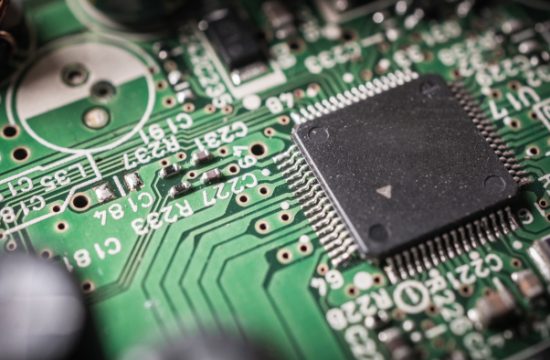When it comes to mining, there are endless options of turning electricity into your favorite cryptocurrency. You can run mining software essentially on anything these days, whether it’s a smartphone or a high end mining rig. But as always, there is a catch and it’s called efficiency. While you can theoretically mine Bitcoin on your smartphone, the phone needs much more energy per hash than a mining operation that has been optimized for efficient energy usage.
There are three main types of hardware that can be used for mining: CPUs (Central Processing Units), GPUs (Graphics Processing Units) and ASICs (Application Specific Integrated Circuits). In a normal consumer PC, the CPU is responsible for powering regular operations like browsing the web or saving a document. The GPU aids the CPU by processing the graphical output. While CPUs are more versatile, they are also vastly inferior to GPUs when doing certain tasks over and over again.
For example, the CPU in the computer this article was written on reaches around 0.25Mhash per second while mining Ethereum. This means the CPU can try out 250.000 different hash values per second. While mining at this rate, the CPU uses 35 Watt per hour in electrical energy. While this might sound impressive, a consumer graphics card can make around 25.000.000 guesses per second (25 Mhash/s), while utilizing only 120 Watt. In other words, the GPU outperforms the CPU in terms of efficiency by a factor of over 30! As a result, mining on a CPU will cost you much more in electricity than you will earn in Crypto. For this reason, we are only going to talk about GPUs and ASICs in this article.
The GPU was originally designed to aid the CPU displaying graphic output. While a CPU usually consists of two or four cores, a typical modern GPU has hundreds of smaller cores, which are ideal for parallel tasks.
A GPU is therefore, by design, much more efficient than a CPU when working on tasks that can easily be parallelized – not just mining, but also rendering videos and image recognition. While in comparison to a CPU a GPU might seem not very versatile, it is highly adaptable in terms of cryptocurrencies. There are thousands of cryptocurrencies that can be mined efficiently on GPUs. A GPU gives you maximum flexibility while still being efficient.
As the name indicates, an ASIC or application-specific integrated circuit is not necessarily related to mining – it’s a circuit that was designed to do only one task. ASICs can be found in many daily appliances, such as the timer on a microwave oven or the remote for your garage. ASICs are utilized where a specific task needs to be done as cheaply as possible. Mining Bitcoin is essentially plugging numbers into a calculation, over and over, until a certain solution has been found.

An exemplary ASIC Miner setup
This algorithm is relatively easily implemented in a hardware setup and today all commercial Bitcoin mining is done with ASICs. But even within ASICs utilized for Bitcoin mining, there are vast differences between each generation and in this case, the ASICs greatest strength (efficiency) is also its greatest weakness. Each new generation makes such a comparably huge step in efficiency that after one or two generations, old mining hardware first becomes inefficient, then worthless. And while a comparably inefficient GPU can still power a gaming PC, an ASIC can only mine Bitcoin. Once the energy costs surpass the mining profits, the ASIC serves no purpose anymore. Unless, of course, you are in need of a ten pound aluminum door stopper.
Some cryptocurrencies also have actively tried miners to stop using ASICs. Ethereum, for example, has proven itself to be very resistant to ASICs and its founder Vitalik Buterin is optimistic that things are going to stay this way. Another prominent example is Monero whose developers implemented code to specifically make already existing ASIC-hardware worthless. As a result of this action, Genesis upgraded all existing contracts who were utilizing ASICS free of charge to GPUs.

The Enigma Farm (2017)
The most important reason for communities to reject ASICs is decentralization. Many people already have a GPU in their computer and therefore can help keeping the network decentralized. While some developers argue that an ASIC is a very specific investment that puts much power into the hands of the ASIC manufacturer and parties wealthy enough to purchase large quantities of such hardware, others think that ASICs actually strengthen a network. If specialized hardware is utilized, things like 51%-attacks with leased cloud-based GPUs become much more difficult and inefficient.
Ultimately, the mining algorithm a coin utilizes dictates which technology makes the most sense. In case of Bitcoin and its SHA-256 algorithm, ASICs are the way to go, while Monero will stay exclusive to GPUs for probably a long time. But things are not always as simple. Although there are already ASICs available for Ethereum, its Ethash algorithm is so well optimized for GPUs that ASICs are only marginally more efficient while costing much more initially.

Sweden Mining Farm powered by GM Radiant (2018)
Choosing the right mining hardware can be a difficult – but it doesn’t have to be. Genesis is dedicated to offer you the best solution for your needs and our approach goes far beyond just the newest and best in hardware.
Efficient mining is dependent on many factors and our Radiant technology ensures you get the best bang for your buck, from mining software over hardware to the most suitable location. If you want the latest and best in ASIC-technology, take a look at our Bitcoin mining contracts. If you prefer flexibility and decentralization, check out our brand new GPU mining contracts.











